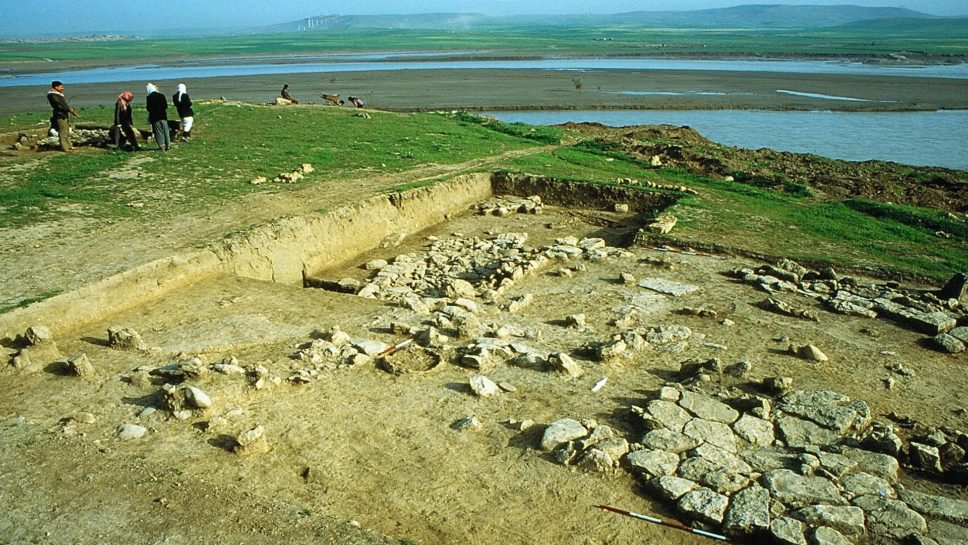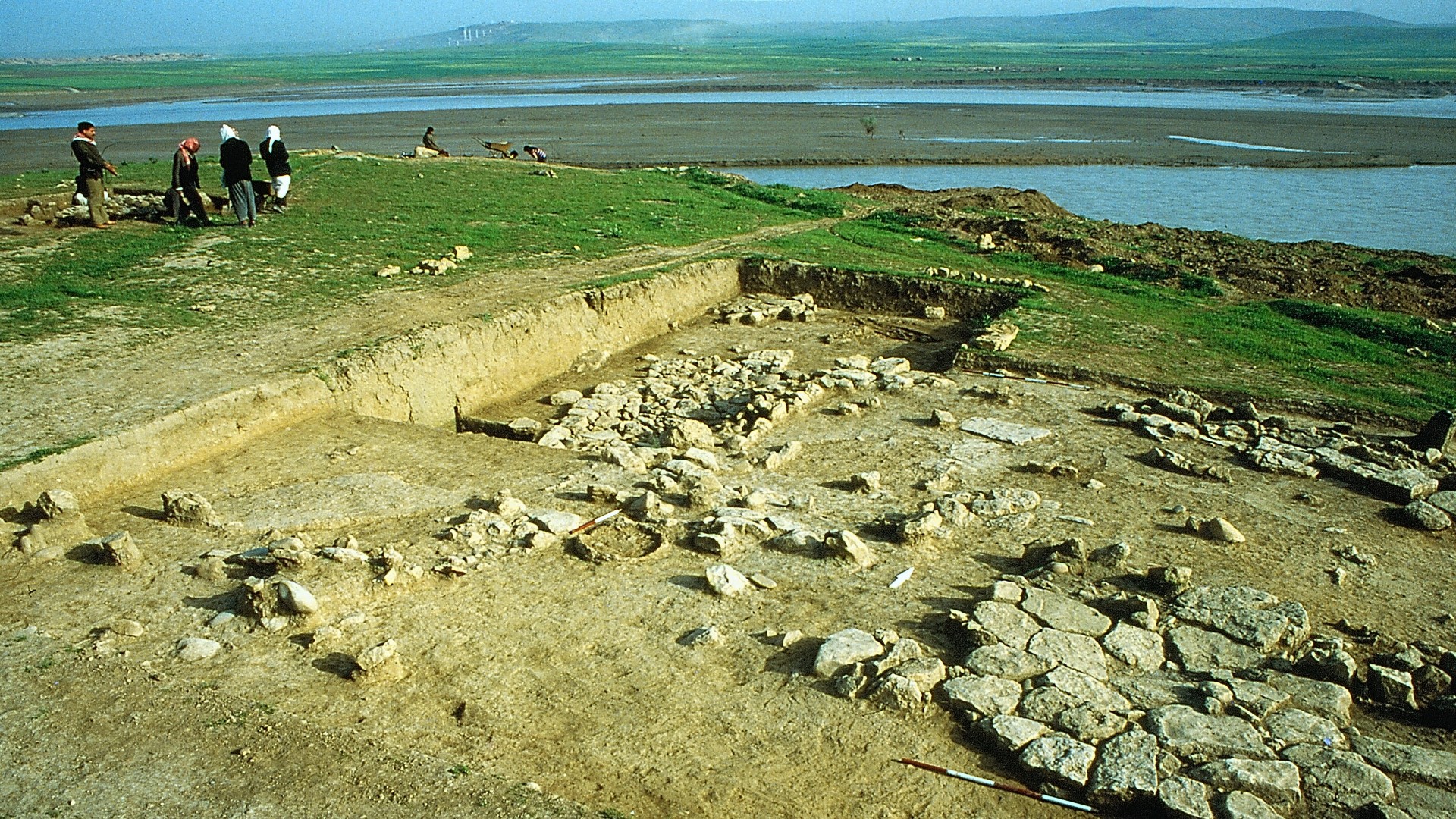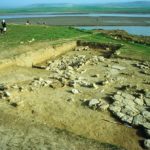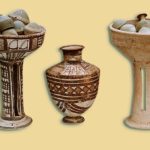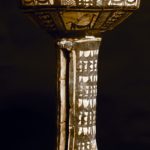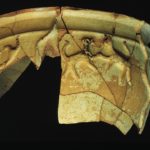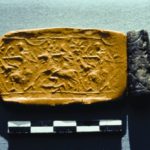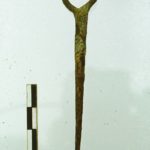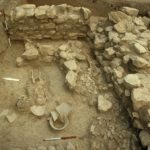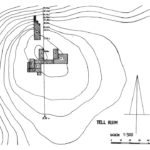Tell Rijim
Tall Rigm
-
Project name:
Eski Mosul Dam Salvage Project
-
Site type:
Settlement and burial ground
Location:
Iraq
Northern MesopotamiaDating:
– Late Uruk period (38003500 BC)
– Ninevite 5 period (2750–2550 BC)
– Middle Bronze Age
– Middle Assyrian period (9th century BC)
– Neo-Assyrian period (8th–7th century BC)
– Achaemenid period(?) (6th–4th century BC)
– Sassanid period(?) (3rd–7th century AD)
Most interesting finds:
– Graves from the Ninevite 5 period
– Fragments of residential buildings from the Middle Bronze Age and the Neo-Assyrian period
– Four cylindrical seals and two fibulae from the Neo-Assyrian period
– Graves from the Achaemenid or Sassanid period
History of research:
Dates of PCMA research:
1984–1985
Type of research:
Salvage excavations
Project directors:
Piotr Bieliński
Partners:
– Polish Centre of Mediterranean Archaeology of the University of Warsaw
– Directorate of Antiquities of the Republic of Iraq
Description of site and research results:
The site was located about 1 km west of the village of Raffaan, on an oval-shaped promontory (measuring 250 m by 100 m), which sloped down to the river on its northern side. The summit of the tell rose to about 28 m above the level of the river.
Tell Rijim was a multi-layered settlement site. On the summit six skeletal burials from the Sassanid period (3rd–6th century AD) were uncovered. One of the interesting finds from this burial ground was a bronze pin with a stylized representation of a horse.
Immediately below the surface the destroyed remains of Neo-Assyrian buildings were found, including paved courtyards, bread ovens and rectangular rooms built on stone foundations. The most valuable finds from this layer were four cylindrical seals dated to the second half of the 8th century BC.
Best-preserved are the remains of a small settlement of the Khabur Ware Culture, covering about 1 ha and surrounded by a defense wall, which existed in the first half of the 2nd millennium BC. In the western part of the site a large fragment of a residential building was discovered, which consisted of an extensive courtyard (about 14 m by 14.5 m) with traces of stone paving. A large vessel with a unique plastic decoration of appliqués depicting snakes, pairs of scorpions and a pair of four-legged creatures was found in this layer.
In the central part of the site two graves from the Ninevite 5 period (first half of the 3rd millennium BC) were uncovered. One was especially rich in grave goods, namely numerous pottery vessels which consisted of two kraters with high stems filled with 28 cups and a jug. One of the kraters and the jug had a painted decoration of geometrical and figurative motifs of stylized goats.
The oldest layers of settlement on the site were relics of clay walls from the late Uruk period (about 3500–3300 BC) and two children’s burials in kitchen vessels.
Szeląg, D. (2015). Zaścianek: Tell Ridżim i rejon Eski Mosul w okresie średnio- i nowoasyryjskim, Warszawa: PCMA
Bieliński, P. (2013). Four Assyrian cylinder seals from Polish excavations in Northern Iraq, EtTrav, 26, 129–134.
Szeląg, D. (2011). Middle Assyrian pottery from Polish excavations on the site of Tell Rijim(Iraq): preliminary study, Światowit 9 (50)/A, 99–116.
Bieliński, P. (2003). Ninevite 5 burials at Tell Rijim, w: E. Rova, H. Weiss (red.) The Origins of North Mesopotamian Civilization: Ninevite 5 Chronology, Economy, Society (=Subartu, 9), (pp. 493–512). Turnhout: Brepols Publishers.
Koliński, R. (2000). Tell Rijim, Iraq: the Middle Bronze Age layers. Eski Mosul Dam Salvage Project Excava-tions of the Polish Center of Archaeology, University of Warsaw (=BAR IS 837). Oxford: Archaeopress.
Koliński, R. (1997). The form of the Old Assyrian settlement on Tell Rijim, Northern Iraq, w: Assyrien im Wandel der Zeiten: XXXIXe Rencontre assyriologique internationale, Heidelberg, 6.–10. Juli 1992 (=Heidelberger Studien zum alten Orient 6). Heidelberg: Heidelberger Orientverlag.
Bieliński, P. (1995). Od Eufratu do Tygrysu i jeszcze dalej, w: M. L. Bernhard (red.), Od Nilu do Eufratu: polska archeologia śródziemnomorska 1981–1994 (pp. 119–126). Warsaw: PCMA
Kaim, B. (1995). The Post-Assyrian graves on Tell Rijim Omar Dale. EtTrav, 17, 35–41.
Bieliński, P. (1992). Tell Raffaan and Tell Rijim – First Season of Polish Excavations in the Eski Mosul Region – Iraq. EtTrav, 16, 273–277.
Bieliński, P. (1992). Tell Rijim and Tell Raffaan 1985 – Two campaigns of Polish excavations in Northern Iraq. EtTrav, 16, 279–288.
Bieliński, P. (1987), Tell Raffan and Tell Rijim 1984–1985: Preliminary report on two seasons of Polish excavations in Saddam’s Dam Project Area, w: Researches on the Antiquities of Saddam Dam Basin Salvage and other Researches, (pp. 13–19). Baghdad: State Organization for Antiquities and Heritage.
Bieliński, P. (1987), Preliminary report on the third season of Polish excavations on Tell Rijim Omar Dale, Saddam’s Dam Project Area, w: Researches on the Antiquities of Saddam Dam Basin Salvage and other Researches, (pp. 24–32). Baghdad: State Organization for Antiquities and Heritage.
Bieliński, P. (1987). Tall Raffan and Tall Rigm. Two seasons of Polish excavations 1984–85. Archiv für Orientforschung, 34, 206–208.
Kozłowski, S.K., Krogulska, M., Reiche, A., Szymczak, K. (1986). Irak, w: Kiss, Z. (red.) 50 lat polskich wykopalisk w Egipcie i na Bliskim Wschodzie, Warszawa: PCMA, 135–142.
Gallery:
-
1. View from the tell on the Tigris River Valley; in the foreground relics of architecture from the Neo-Assyrian period in the eastern part of the site. Widok z tellu na dolinę Tygrysu; na pierwszym planie pozostałości zabudowy z okresu nowoasyryjskiego we wschodniej części stanowiska (fot. F.M. Stępniowski)
-
2. Vessels from a Ninevite 5-period grave (first half of the 3rd millennium BC). Zestaw naczyń z grobu z okresu kultury Niniwa 5 (1. poł. III tys. p.n.e.) (fot. A. Reiche)
-
3. Krater with a painted decoration from a Ninevite 5-period grave (first half of the 3rd millennium BC). Krater z dekoracją malowaną z grobu z okresu kultury Niniwa 5 (1. poł. III tys. p.n.e.) (fot. A. Reiche)
-
4. Vessel with a plastic decoration from the Khabur Ware period (first half of the 2nd millennium BC). Naczynie z dekoracją plastyczną, pochodzące z okresu kultury ceramiki chaburskiej (1. poł. II tys. p.n.e.) (fot. F.M. Stępniowski)
-
5. Cylindrical seal and its modern-day impression with a depiction of two archers, one kneeling and the other on horseback, Neo-Assyrian period (8th–7th century BC). Pieczęć cylindryczna i jej współczesny odcisk z przedstawieniem klęczącego łucznika oraz łucznika jadącego na koniu, okres nowoasyryjski (VIII–VII w. p.n.e.) (fot. A. Reiche)
-
6. Bronze pin with a zoomorphic head found in a grave from the Sassanid period (3rd–6th century AD). Szpila z brązu z główką zoomorficzną, z grobu z okresu sasanidzkiego (III–VI w. n.e.) (fot. A. Reiche)
-
7. Relics of architecture from the Khabur Ware period (first half of the 2nd millennium BC) and skeletons from a modern-day cemetery. Relikty zabudowy z okresu kultury ceramiki chaburskiej (1. poł. II tys. p.n.e.); szkielety należą do współczesnego cmentarza (fot. F.M. Stępniowski)
-
8. Plan of the site. Plan stanowiska (rys. P. Bieliński)

